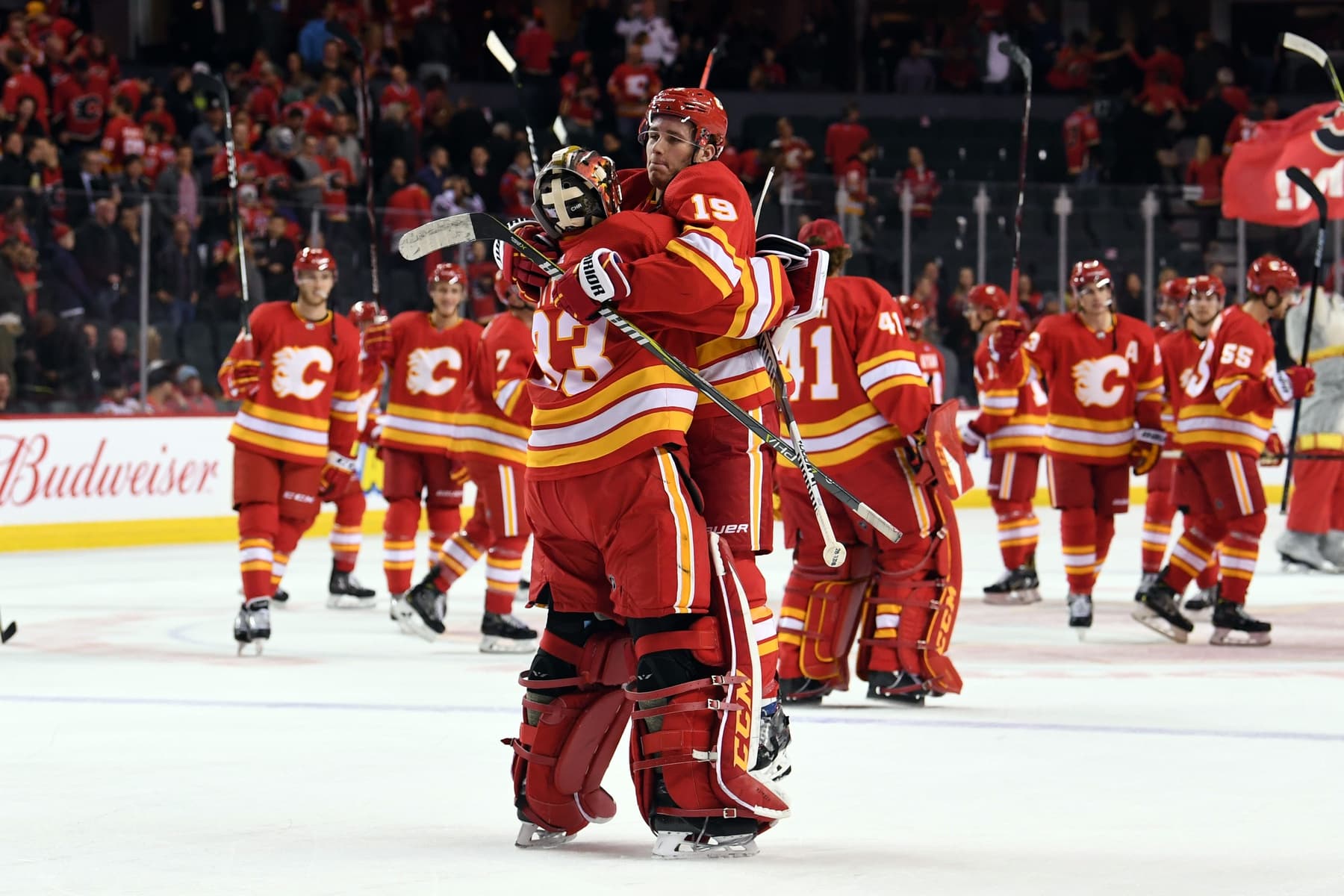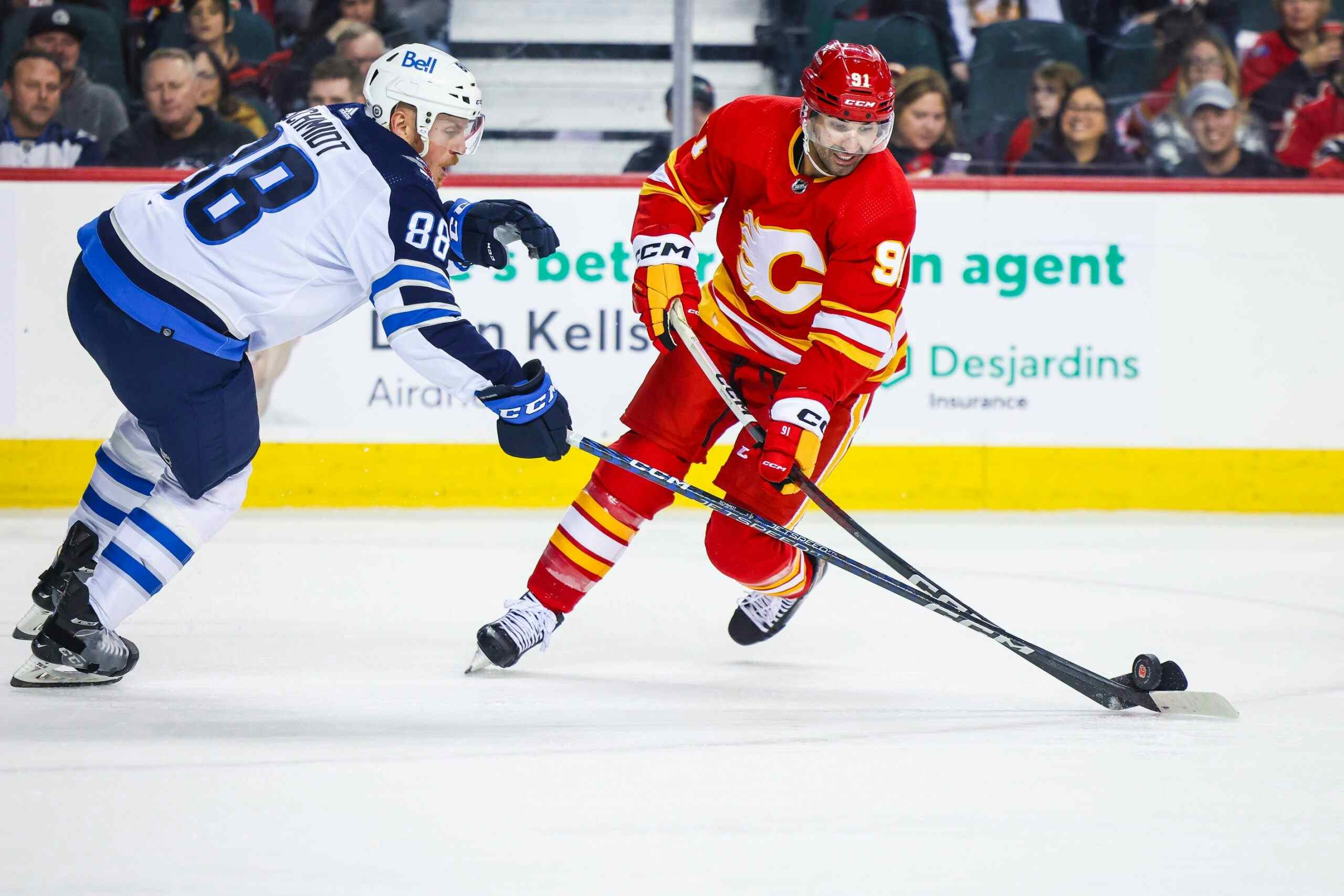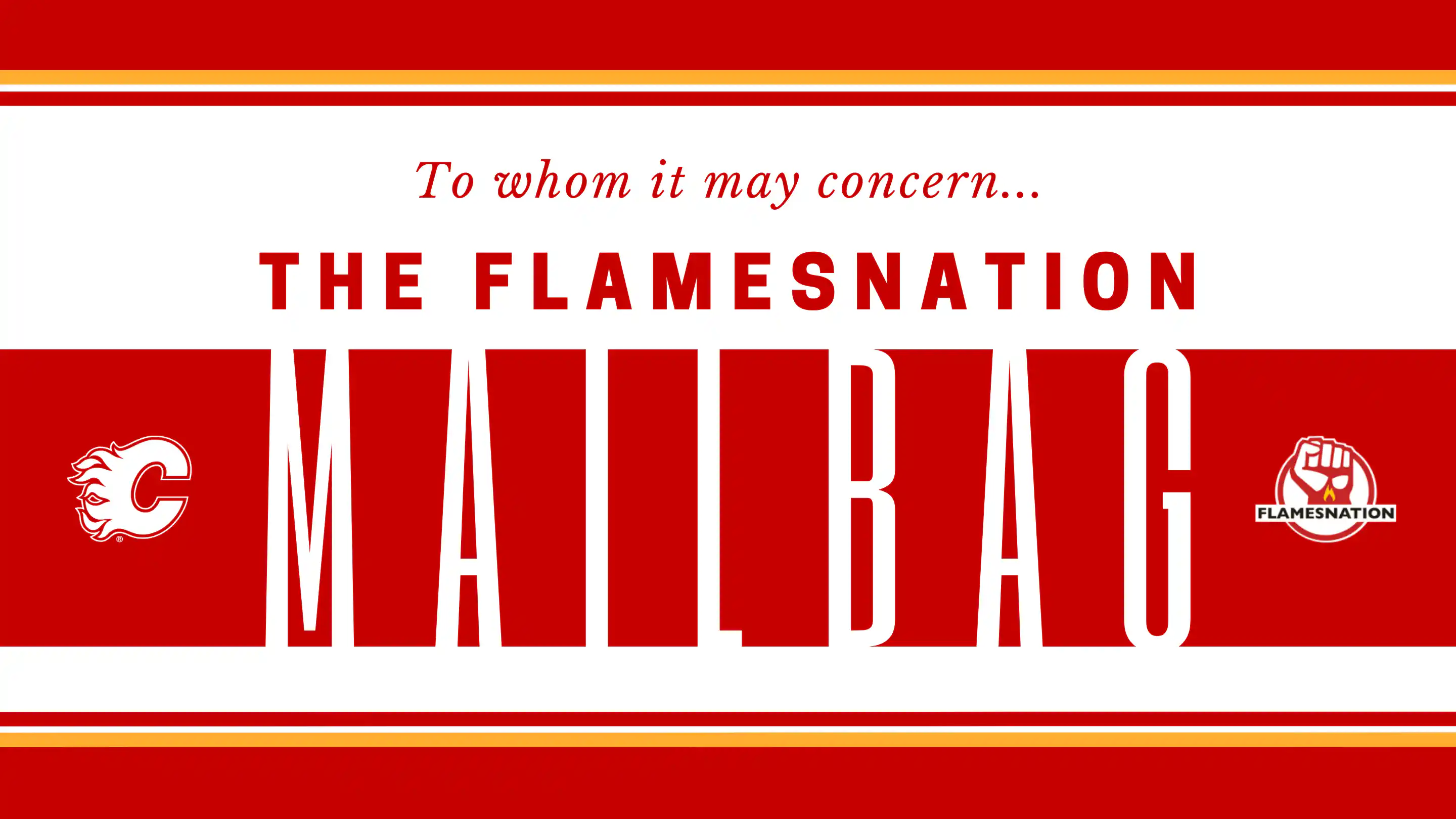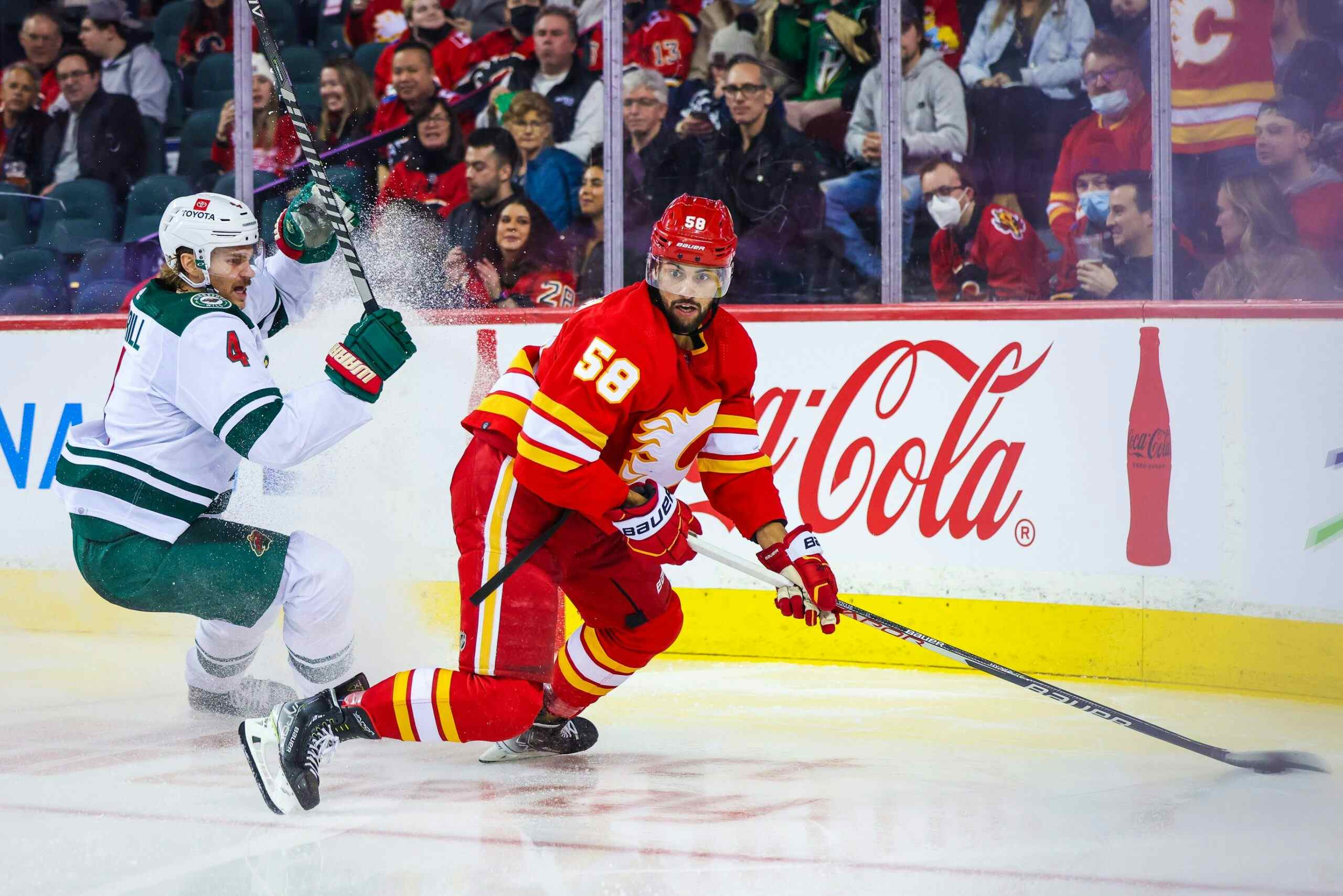Matthew Tkachuk could – and should – be the first to break the Giordano cap

Whenever Brad Treliving leaves the Flames, his legacy will certainly have a mixed reception. However, if there’s one undisputed good move, it was his shrewd negotiating that kept star players locked up long-term with below market value AAVs due to setting a precedent that no one gets paid more than the captain, Mark Giordano. That’s a mouthful, so let’s just call it the Gio Cap.
The Gio Cap has been the mechanism which keeps costs down and allows the Flames to keep young, good players around for longer. At the time of establishment, Giordano, a #1D who could still play top level hockey at an age when most defencemen are past their expiry date, re-signed for a cool $6.75M, even though he could certainly argue for more as the franchise defenceman.
Now that’s the standard, and it causes a trickle down effect for other Flames looking for big bucks. Johnny Gaudreau, one of the league’s superstars, buckled on the eve of the 2016-17 season to the power of the Gio Cap, settling for $6.75M when he certainly could’ve made much, much more. Earlier that summer, Sean Monahan took a few dollars less than most 1Cs make, thanks to the Gio Cap. As we go down the roster, we can see players who took much less than they should’ve. Briefly: Elias Lindholm ($4.85M), Noah Hanifin ($4.95M), and Mikael Backlund ($5.35M).
It has its downsides: the Gaudreau holdout was annoying, and you feel that any premium free agent is going to write off Calgary immediately given the artificial salary cap in place. But the upsides outweigh the downsides by a large margin: Calgary has a strong group of players under 25 who can be among the best in the NHL despite taking in a smaller salary than those who bargain for more.
Let’s look at the ongoing William Nylander saga in Toronto for further proof (because everything eventually has to be related to the Leafs): there’s an impasse because Nylander (rightfully) deserves around $8M, but the Leafs don’t want to pay that, mostly because that means they’ll have to pay Mitch Marner more. They’ll also have to pay Auston Matthews at least what John Tavares makes, if not more.
Unless there’s some magic to be done, it looks like Toronto is either going to have to break up the band or stick with them and hope the top-heavy roster can carry the rest of the very cheap depth players. It’s extremely hard to say that any situation involving Tavares, Matthews, Marner, and Nylander can end poorly for the team with these players, but that could be how it goes down in the centre of the universe.
So big ups to Treliving, whose responsible re-signing restraint has set the team up to successful and flexible in the long and short run. Now let’s all collectively take a big sip of this coffee and check which upcoming RFAs the team will need to re-sign in the 2019 offseason.
Matthew Tkachuk
Ah. If anyone was going to be the wrench in the plans, you know it had to be Tkachuk.
There’s a lot I could say here, but Ari already said it earlier. So here’s the gist of it: everyone’s favourite winger has been a treat to watch since game one of his career. He can play offence, defence, and the villain to the opposition, doing all three things at near-elite levels. He can play shutdown duty against the league’s other top lines, provide a boost to the powerplay, work well with anyone he’s paired with, and generally tilt the ice in the Flames’ favour whenever he leaves the bench. He’s a jack of all trades and a master of most.
And he’s going to get paid because of all those qualities. For comparison, here’s a list of wingers who scored somewhere between 0.63-0.83 PPG on their ELCs during their teenage years, their fancy stats in their contract year, how much their next contract cost, and what percent of the cap it took up at the time it was signed:
| PPG | CF% | OZS% | Next contract AAV | CH% | |
| Sebastian Aho | 0.75 | 58.10 | 57.53 | n/a (still on ELC) | n/a |
| Mikko Rantanen | 0.74 | 46.07 | 54.82 | n/a (still on ELC) | n/a |
| David Pastrnak | 0.73 | 57.82 | 56.20 | $6.66M | 8.89% |
| Jeff Skinner | 0.7 | 51.25 | 67.04 | $5.725M | 9.54% |
| Nikolaj Ehlers | 0.69 | 53.65 | 53.69 | $6M | 8% |
| Gabriel Landeskog | 0.67 | 48.83 | 45.82 | $5.571M | 8.66% |
| Alexander Radulov | 0.66 | n/a | n/a | n/a (left for KHL) | n/a |
| Max Domi | 0.64 | 47.98 | 54.99 | $3.15M | 4.20% |
| Wojtek Wolski | 0.64 | 49.67 | 48.01 | $2.8M | 4.94% |
| Jamie Benn | 0.64 | 52.56 | 51.97 | $5.25M | 8.16% |
With the exceptions of Domi and Wolski signing bridge contracts, which is almost certainly out of the question here, it looks like Tkachuk will get around 8.5% of the cap based on the average CH% of the players who signed long-term deals. Assuming a minimum $2M jump in cap, that means Tkachuk would get $6.97M, 8.5% of an $82M salary cap. That’s the minimum increase, remember. It could rise as high as $85M, in which case Tkachuk would make $7.225M.
That’s a lot of cash! But if you look at this list of comparables, it’s hard to put more than two players ahead of him. His underlying numbers, as Ari wrote, are just as good or better than any of these numbers. There’s few flaws the Flames can point to in defence of not paying him.
It’s hard to see a way for Treliving to escape paying Tkachuk big time money. Unless cap circumstances force a bridge contract, Tkachuk is the all-around player who deserves his money.
Final thoughts
He wouldn’t be Brad Treliving if he didn’t do everything in his power for Tkachuk to remain at or under $6.75M.
But he’s likely going to have to capitulate. The winger’s performances this season are painting the GM into a corner with every tipped power play goal or multi-assist evening. The longer he remains at the top of the team scoring chart, the higher his AAV will go.
If I could offer a suggestion, I would say the Flames should offer a $7Mx8Y contract before Tkachuk builds a stronger case for that first number to be higher. If they want, they can only pay him $6.75M for the first three years – the length of term remaining on Giordano’s contract – and backload his contract to symbolically keep the Gio Cap intact, but for all intents and purposes, Tkachuk is going to break that cap. It’ll only be a matter of how much.
Recent articles from christian tiberi





